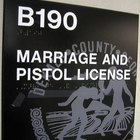
Stockbyte/Stockbyte/Getty Images
Legal separation is one of those terms in divorce law that varies from state to state. It may mean that you filed a complaint with the court and received a separation decree, which you can do in a few states, such as Ohio. But not all states provide for this kind of legal process. For example, in New Jersey, you can simply negotiate and sign a settlement agreement with your spouse.
Legal Separation
There's usually nothing stopping you from filing a complaint for separation even if your spouse is still living with you. Living together might defeat the purpose of filing, however. A separation judgment or decree defines the terms by which you'll live apart. The same applies to marital settlement agreements. If you're living together, custody probably isn't an issue yet -- and you may not have to deal with financial issues yet either. Legal separation in any form typically paves the way for you and your spouse to live apart.
Separation as Grounds
If you and your spouse are separating to establish grounds for divorce, this may change the picture. In some no-fault states, such as North Carolina, spouses must live in two different homes for a full year before they can file for divorce. The state doesn't recognize fault grounds such as adultery or cruelty. In other states, such as Maryland, you have a choice: You can file for divorce on fault grounds, or you can live separately – in two different homes – for a year. Illinois offers similar options, but spouses may be considered separated even if they continue to reside in one dwelling.
Related Articles

How to Legally Change a Name in Georgia

How to File for a Marriage Separation ...

How to File a Motion for Divorce if a ...

How to Get a Copy of Our Marriage ...

How Does a Marriage License Work?

How to Get Certified to Marry Couples

How to Homestead in Montana

California State's Statute on ...

Georgia Civil Ceremony Information

How to File a Marriage License

How to Get Married By the Justice of ...

How to Get a Fast Divorce in Louisiana

How to Prove a Common-Law Marriage in ...

Who Can Legally Perform a Wedding ...

How to File for Legal Separation in ...

Documents Required for a Marriage ...

How to Legally Change a Child's Last ...

Louisiana Justice of the Peace Wedding ...

How to Become a Wedding Officiant in ...

How to Get a Marriage Annulled in the ...
References
Writer Bio
Beverly Bird is a professional writer who is also a practicing paralegal in the areas of divorce and family law. She has offered community workshops for single parents, helping them with the financial and lifestyle issues they often face.
Photo Credits
Stockbyte/Stockbyte/Getty Images